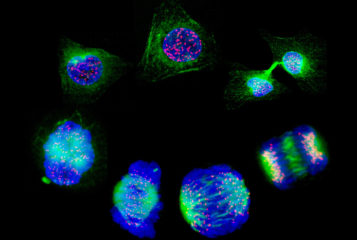Researchers looking for evolutionary ancestors of enzymes used in the CRISPR genome editing have uncovered over one million potential genome-editing enzymes.
The CRISPR/Cas9 approach uses small pieces of RNA as guides to direct a DNA-cutting enzyme called Cas9 to edit specific locations in the genome. It is this RNA-directed feature of the system that makes it so flexible and easy to use. Now researchers from the Massachusetts Institute of Technology (MIT) McGovern Institute and the Broad Institute of MIT and Harvard have discovered a new class of RNA-directed DNA-cutting enzymes, which they call OMEGAs (Obligate Mobile Element Guided Activity).
The lead author of the study Professor Feng Zhang, from the MIT McGovern Institute, told Nature: 'These programmable proteins are very useful, beyond basic biological interest. And this mechanism of RNA-guided DNA recognition is likely something that nature has created independently multiple times.'
The research, published in Science, started out by looking at so-called IscB proteins found in microbes which, based on their protein structure, were suspected to be DNA-cutting enzymes. They found that these were often located in the genome close to areas encoding RNAs, which they called omega-RNAs, and found that these RNAs guide the IscB protein to cut DNA in a specific place, similar to the CRISPR/Cas9 approach.
'It's so easy to just change a guide sequence and set a new target,' said Soumya Kannan, the joint-first author of the study. 'So one of the broad questions that we're interested in is trying to see if other natural systems use that same kind of mechanism.'
The researchers then identified another RNA-guided enzyme similar to IscB, called TnpB, which they found is a likely ancestor of the related Cas12 enzyme. Database searches revealed that there are over one million potential genes related to TnpB in different species, showing that this type of genome-editing system is more widespread than once thought.
They were able to use the IscB system to specifically edit human DNA, albeit less efficiently than CRISPR/Cas9. However, the smaller size of the IscB enzyme compared to Cas9, and the range of potential enzymes out there, provide the potential for discovering and developing improved genome editing methods in the future.
'We are super excited about the discovery of these widespread programmable enzymes, which have been hiding under our noses all along,' said Professor Zhang. 'These results suggest the tantalising possibility that there are many more programmable systems that await discovery and development as useful technologies.'
Sources and References
-
The widespread IS200/605 transposon family encodes diverse programmable RNA-guided endonucleases
-
New programmable genome editing proteins found outside of CRISPR systems
-
The CRISPR family tree holds a multitude of untapped genome editing tools
-
Researchers uncover new families of genome-editing enzymes
-
Trove of CRISPR-like gene-cutting enzymes found in microbes
-
Beyond CRISPR: New class of genome-editing enzymes discovered





Leave a Reply
You must be logged in to post a comment.